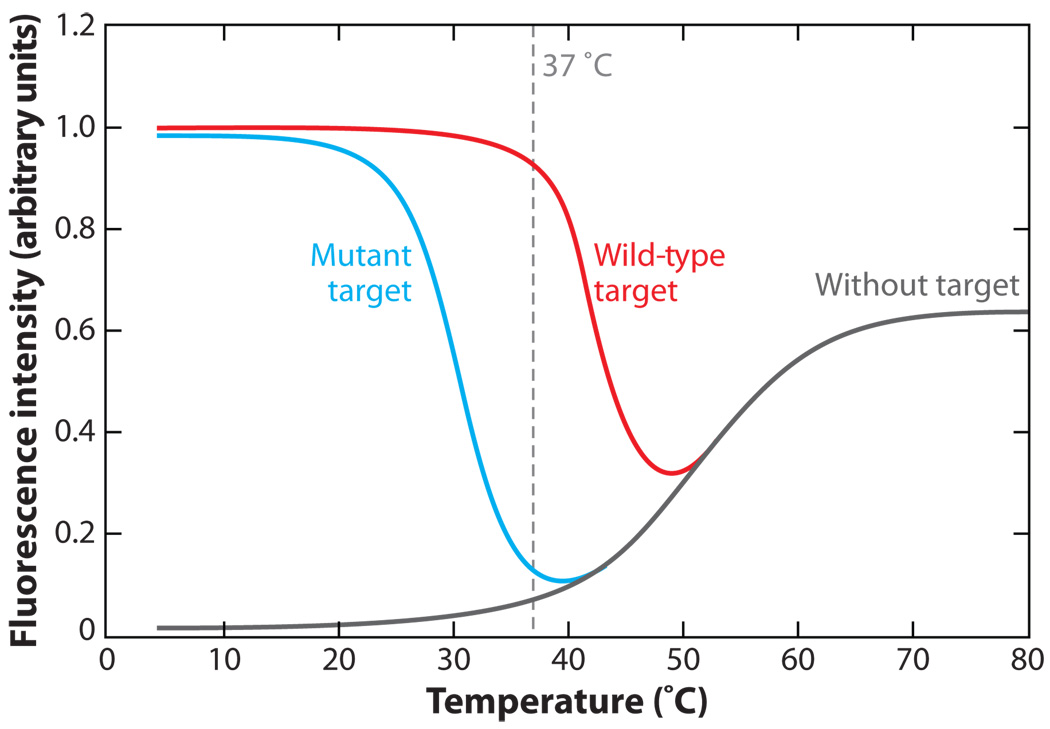Figure 3.
Typical molecular beacon thermal denaturation profiles. With wild-type (complementary) targets, molecular beacons emit a maximal signal at low temperatures, indicating that the molecular beacons are bound to target; as temperature increases, the molecular beacons melt away from target. With mutant targets, the melting temperature of the molecular beacons is reduced. The difference between the wild-type target and mutant target curves over a range of temperatures represents the window of discrimination between wild-type and mutant targets. In live-cell studies, it is desirable for the melting temperature of perfectly complementary hybrids to be above 37°C and the melting temperature for hybrids with single-base mismatches to be less than 37°C.

